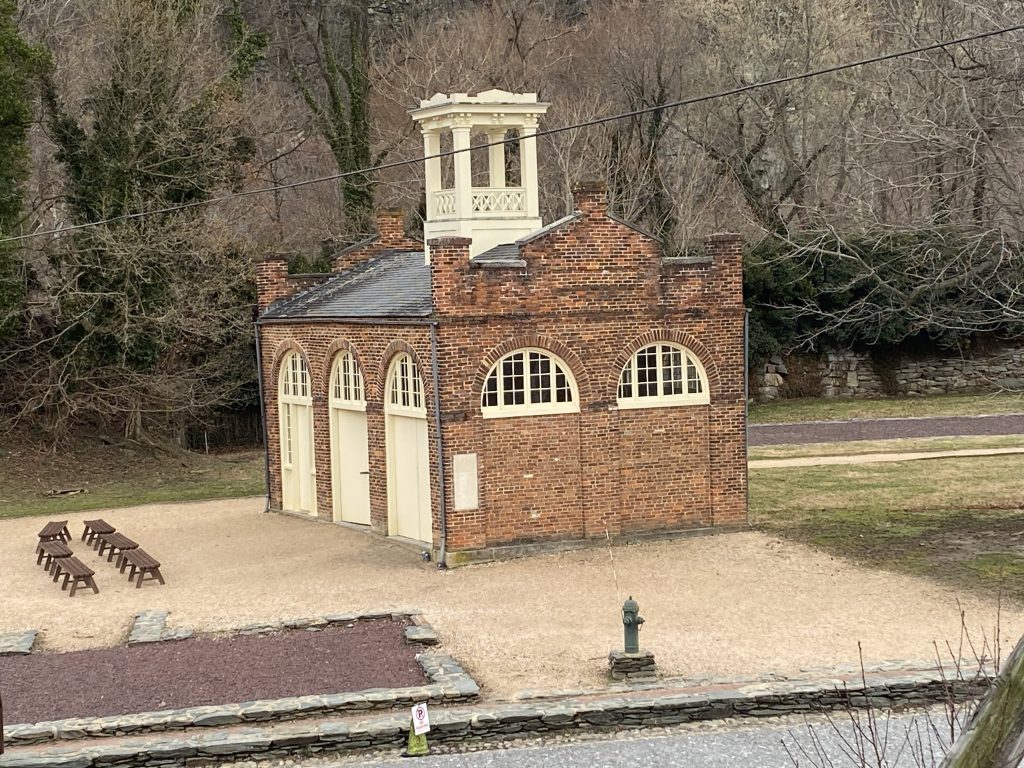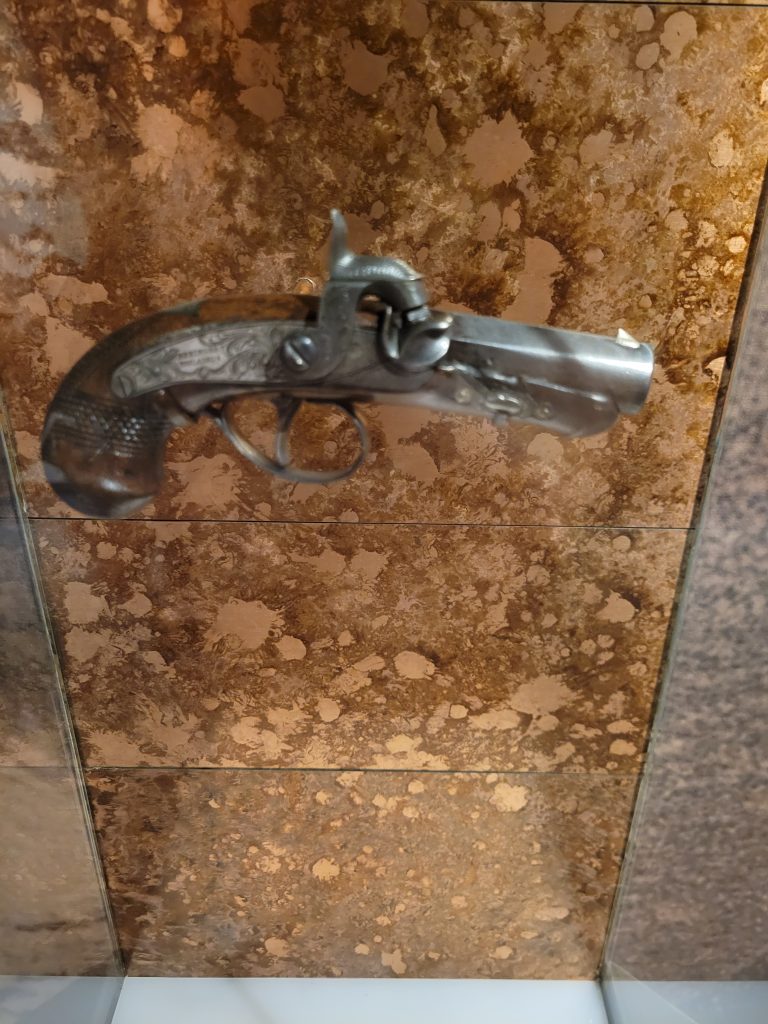Historic Shots at the End and the Beginning
Surreal. It sits in a glass class. Surrounded by interpretive panels. Yet still visibily isolated. As though no other artifact would by choice be curated near it. It is the pistol that John Wilkes Booth used to shoot President Lincoln.
Over the years, I’ve looked at a lot of weapons. A lot of historic guns – muskets, rifles, pistols, of all types. Many of them in museum collections were used and often on the battlefields. By simple reasoning and probabilities, I’ve seen death-dealing weapons that killed before. Rifles that must have shot bullets that killed across the field. Pistols shot at close range in the whirl of a cavalry fight. Bayonets that dripped with blood many years ago. But there was something exceptionally chilling to see the weapon involved in the cold-blooded murder of a president.
The unknown soldier killed by a now-museum gun may have been just as beloved to his father as Lincoln was to his young son. The bullets shot in the untold stories may have been just as deadly. Is it somehow wrong to attach such importance to this one weapon, to this one violent, mortal wounding on the night of April 14, 1865? Why does Lincoln’s death hold such…meaning? Is that right? Is it allowing the great man of a brief era to overshadow the others of the same time?
Maybe it’s the elusive what if Lincoln had lived. Perhaps that realization of all that ended when Booth fired that fatal shot. It wasn’t technically the last shot of the divisive war, but there’s that feeling, and so interpretation that points to the Ford’s Theater assasination as one of the final chapters of the Civil War.
I stood there and wondered, but didn’t find answers.
Nearly 24 hours after viewing Booth’s pistol at Ford’s Theater, I found myself in my car, creeping along the cobbled street of lower Harpers Ferry. Traffic, lack of parking, and tourists wandering suddenly into the middle of the street did not necessarily put me in a tranquil mood. My “escape route” took me past the site of the old railroad bridge and the engine house sat ahead of me.

Here, on an October night in 1859, shots rang out. Should they be counted as the first shots of the Civil War? Perhaps that might be a stretch by some standards of evaluating war-timelines. But John Brown’s Raid on Harpers Ferry whirled the nation into more polarized sides on the issue of slavery and the determination to fight.
The smuggled guns to the hidden farm where Brown prepared for his raid. The later-captured pikes that fired the imaginations, fears, and militia forming of the south. Here, too, specific weapons had their say and place in the event.
A first shot, a last shot – symbolically bookending the era of American Civil War? Not literally, but figuratively? I slowly accelerated up the slope, leaving the historic town behind; I kept wondering about these places of beginning and end and those shots that pierced the silent darkness and the laughing theater. The questions lingered. The words around the ideas perhaps still hard to form, even 160 years distant.

A most interesting perspective
We have the bullet at the National Museum of Health and Medicine in Silver Spring,MD
This article infuriates me! I should sleep on it but I can’t.
One point regarding Lincoln being shot by Bundy. Lincoln wasn’t shot he was assassinated! And Bundy’s co horts were simultaneously out to assassinate Vice President Andrew Stewart and Secretary Steward. I digress. “Why does Lincoln’s death hold such…meaning?” Because if he had lived this country would have had a much easier time during reconstruction. We may never had the Jim Crowe nightmare. Ya know, maybe so many black people, including women and children, wouldn’t have been hung from bridges and trees. Grant did well to hold to Lincoln’s values but he couldn’t live forever.
I believe yes, Lincoln’s death had great meaning regarding the mending of the still angry South. Not for nothing but Lincoln gave the South very lenient terms of surrender for just that reason: unity. Grany wanted unconditional surrender.
I often wonder if we would even have needed a civil rights movement if Lincoln’s ideologies had survived.
As far as Lincoln”s “brief time in an era being allowed to overshadows others of that time” Lincoln overshadows men and women of today! He continues to this day to be revered and studied by great men and women from around the works.
His essence is eternal!
I suggest you research and answer your many questions before you write another article.
Bundy, Steward, Vice President Andrew Stewart? Are you having us on?
Bundy? Gawd, lol. I was a bit heated.
Any other comments besides my Bundy gaff?
The Massachusetts Historical Society has John Brown’s six shooter. The curator showed my teachers’ workshop and asked if we wanted to handle. Eager to touch infamy, I grasped the revolver. A small light thing. They had Governor Andrew’s coal black pistol, that went with his ceremonial uniform. It was enormous, big enough to impress Dirty Harry.
The object that was most memorable was an iron slave collar, one of the ones with the prongs, a souvenir found by some Massachusetts troops when they occupied New Orleans. I got to hold that, too. Cold from the environmental controls, rough, heavier than you’d think, much heavier.
Booth’s deringer is one of the most powerful artifacts I’ve seen. Another powerful artifact of that event is the video of Samuel Seymour on the television show “I’ve Got a Secret” in the mid 1950’s. He was five years old when he attended “Our American Cousin” and was the last eyewitness of the assassination. The in-studio audience audibly gasped when it was shown what his “secret” was. We are really not that old of a country.